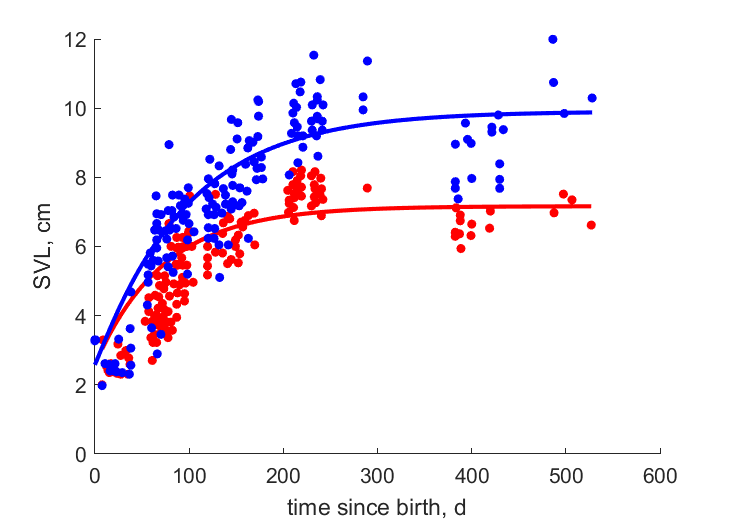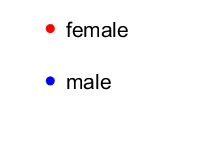Predictions & Data for this entry
| Model: std | climate: Am, Aw | migrate: | phylum: |
| COMPLETE = 2.5 | ecozone: TPam | food: biCi | class: |
| MRE = 0.090 | habitat: 0iTf | gender: Dg | order: |
| SMSE = 0.017 | embryo: Tt | reprod: Os | family: |
Zero-variate data
| Data | Observed | Predicted | (RE) | Unit | Description | Reference |
|---|---|---|---|---|---|---|
| ab | 122 | 122 | (2.48e-05) | d | age at birth | Wiki |
| tp | 60 | 65.28 | (0.08802) | d | time since birth at puberty | KarsAndr2008 |
| am | 219 | 218.3 | (0.003411) | d | life span | KarsAndr2008 |
| Lb | 2 | 2.576 | (0.2882) | cm | SVL at hatching for females | KarsAndr2008 |
| Lp | 7 | 5.287 | (0.2448) | cm | SVL at puberty for females | KarsAndr2008 |
| Li | 7.5 | 7.165 | (0.04464) | cm | ultimate SVL for female | KarsAndr2008 |
| Lim | 10 | 9.909 | (0.009149) | cm | ultimate SVL for male | KarsAndr2008 |
| Wwb | 0.4 | 0.3738 | (0.06538) | g | wet at birth | KarsAndr2008 |
| Wwi | 7.6 | 8.042 | (0.05813) | g | ultimate wet weight | Meir2010 |
| Ni | 11 | 11.05 | (0.004096) | # | life time reproductive output | KarsAndr2008 |
Uni- and bivariate data
| Data | Figure | Independent variable | Dependent variable | (RE) | Reference |
|---|---|---|---|---|---|
| tL_f |   | time since birth | SVL | (0.1551) | KarsAndr2008 |
| tL_m |   | time since birth | SVL | (0.1198) | KarsAndr2008 |
Pseudo-data at Tref = 20°C
| Data | Generalised animal | Furcifer labordi | Unit | Description |
|---|---|---|---|---|
| v | 0.02 | 0.02665 | cm/d | energy conductance |
| p_M | 18 | 1000 | J/d.cm^3 | vol-spec som maint |
| k_J | 0.002 | 0.002 | 1/d | maturity maint rate coefficient |
| k | 0.3 | 0.01568 | - | maintenance ratio |
| kap | 0.8 | 0.8358 | - | allocation fraction to soma |
| kap_G | 0.8 | 0.8004 | - | growth efficiency |
| kap_R | 0.95 | 0.95 | - | reproduction efficiency |
Discussion
- Males are assumed to differ from females by {p_Am} only
- mod_1: males have equal state variables at b, compared to females
Facts
- Single clutch during seasonal life span as juvenile/adult (Ref: KarsAndr2008)
- Known for its agressive sex life, which might relate to its huge maintenance in the waste-to-hurry tetrapod (Ref: Kooy2013)
Bibliography